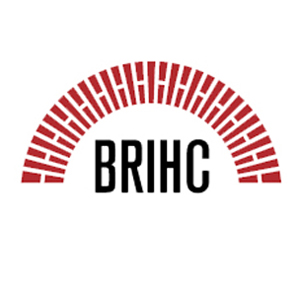
History & Cultures’ Karen Harvey hosted this year’s Royal Historical Society Public History Symposium at Birmingham Museum & Art Gallery alongside the University of Essex’s Alix Green. Doctoral researcher Hannah Briscoe reflects upon a stimulating day of reflection upon the challenges and joys of doing history in public.
Juggling events in our busy calendars can be quite a challenge. Yet, these opportunities are sometimes just what we need to come up for air from our own research and take in fresh ideas and new perspectives. This was my experience on 16 March, when I attended the 2018 Public History Symposium co-organized by the Royal Historical Society, the Birmingham Museum and Art Gallery, and the University of Birmingham.
The day included fascinating presentations by winners of the Public History Prize competition, a guided tour of the museum’s new gallery ‘The Past is Now: Birmingham and the British Empire’, a talk by the curator and a discussion panel on ‘the challenges of depicting the past of empire in contemporary Britain’. I would like to give some of my impressions and what I took away from the experience. More detailed descriptions the projects can be found on the RHS blog.
Jackie Keily (Museum of London) gave the first presentation for her team’s project, ‘Tunnel: The Archaeology of Crossrail’, winner of the Museums & Exhibitions prize. It was exciting to hear how the museum sector could collaborate with archaeologists and a large infrastructure project to share with the public the history they literally walk upon, from unearthed marmalade jars to prehistoric artefacts taken from what is now the Elizabeth line in London.
The winner of the Online category was ‘Our Migration Story’, presented by Claire Alexander (University of Manchester) and Sundeep Lidher (Runnymede Trust). Their project has provided an online hub and knowledge centre that appeals to students and educators alike and brings Britain’s migration story to life. I was impressed by the researchers’ determination to do more than simply make the material available, but also accessible through continued outreach showing teachers how to use this valuable resource and listening to their educational needs and concerns.
This was the first year which included an Undergraduate category, and the winner has certainly set the bar high. Cherish Watton (University of Cambridge) shares the wartime stories of “Land Girls” and “Lumber Jills” on her website. I was most inspired by her initiative and industry to create something far beyond the requirements of her course that she can continue to build upon for future research—her own and others. It is also a great way for people to share their own stories on a platform that moves beyond an entertainment or political agenda.
Adrian Bingham (University of Sheffield) shared his team’s project ‘Historicising “Historical” Child Sexual Abuse’ which won the Policy and Public Debate category. Through archival research, this team was able to construct a database of press reports that reveal transitions in media coverage of this painful issue and provides historical context for ongoing criminal investigations and current policy-making. This presentation opened my understanding to what Public History means. It encouraged me to think of the unique audiences that research can touch. Whether that audience is very broad or extremely specific, there are many ways to do public history.
After lunch, Kavita Puri gave the keynote address and shared about her team’s project, ‘BBC: Partition Voices’ which was the overall prize winner as well as the winner of the Radio and Podcast category. This project was a BBC 4 series that commemorated the 70th anniversary of the partitioning of British India into India and Pakistan through first-hand interviews. I was inspired in two ways by this project. First, it highlighted the importance of oral history and how it can vivify pasts that may otherwise be forgotten or distorted through official reports. Secondly, by contributing their stories to the project, many of the participants gave voice to memories that they had never spoken of with their families. For family members, this brought a new understanding of not only their loved ones who lived through these events, but also their own histories and family cultures.
Joe Hopkinson (University of Huddersfield) won the Postgraduate prize for his documentary film ‘Dispersing the Problem: Immigrant Children in Huddersfield, 1965-1974’ which looks at the bussing system that dispersed minority children to surrounding schools. This program affected the students in multiple ways, some of which are captured by the interviews of four former students and two former educators. Many questions were raised that must be grappled with today. I was inspired by Hopkinson’s ability to draw from the talents of friends and colleagues to do something he had never done before (create a film) and make it of high technical and aesthetic quality.
In the afternoon, we had the opportunity to go through ‘The Past is Now’ gallery before hearing a talk by the curator about designing the exhibit. Rebecca Bridgman shared about their efforts in ‘decolonizing’ the curatorial structures through adopting a co-curation process with a team of local activists. I appreciated her transparency, and it led into fruitful discussions in the response panel that followed, which included Sadiah Qureshi (University of Birmingham) and Margot Finn (President of the RHS). It was chaired by Karen Harvey (University of Birmingham) and opened to audience questions in the end. The impression I left with was that these issues cannot be fully addressed with a single endeavour—but by making purposeful efforts in partnership with others, then being willing to evaluate those efforts honestly, we can build momentum for change.
I left the museum feeling that it was a day well spent. Hearing about others’ research and speaking about the challenges and successes they face stimulates creativity and critical reflection in my own work and intellectual processes. It has also expanded my understanding of what public history looks like and left me ruminating how my own research can meaningfully engage with diverse audiences.